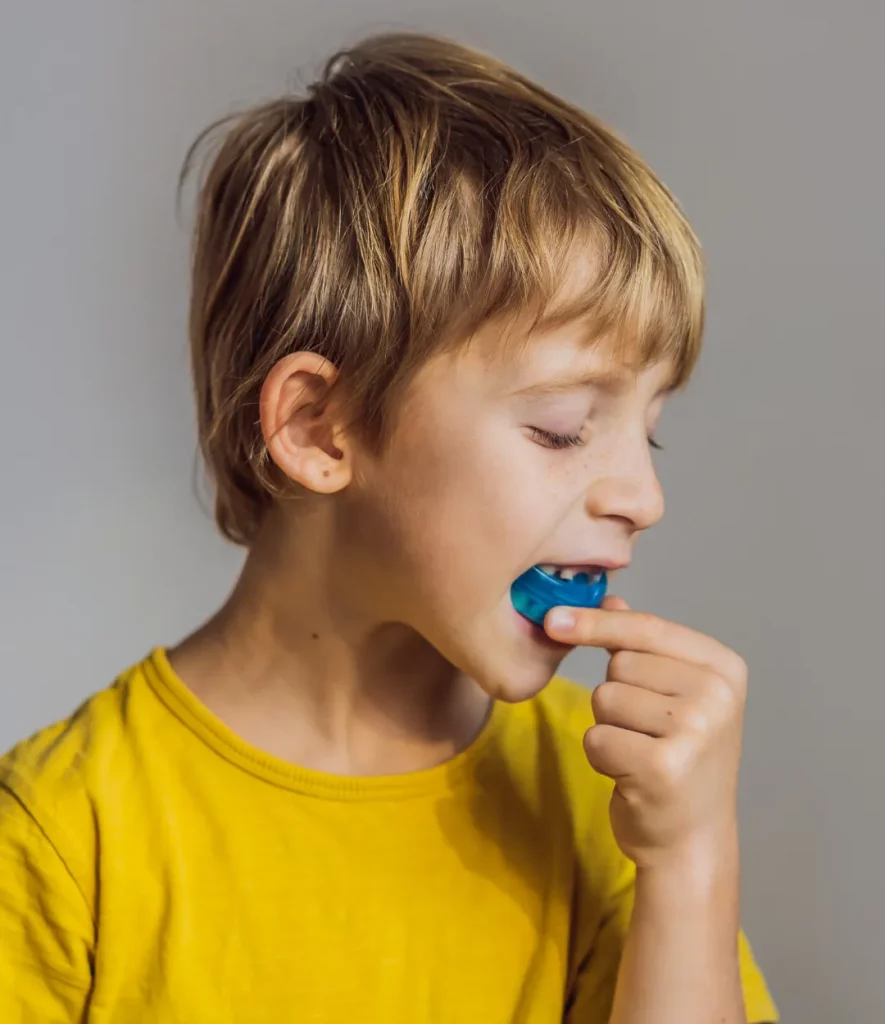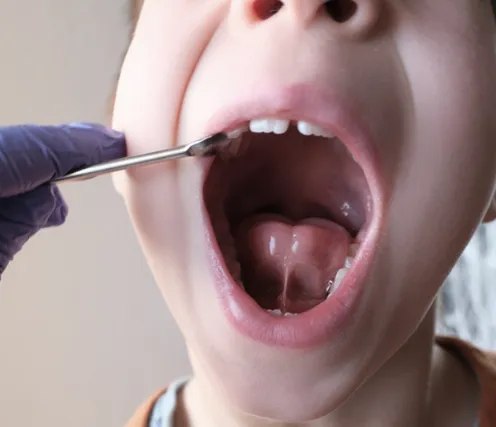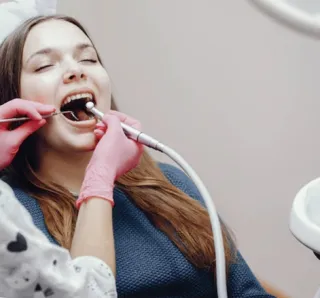Oral Myofunctional Therapy (OMT)
Myofunctional is essentially physiotherapy for the tongue. Similar to other surgical procedures, myofunctional therapy fills the same role to help improve the success of a Frenectomy (surgical procedure to the tongue or lip to release it), adding the supports to increase mobility and restore proper function and posture.
- ORAL MYOFUNCTIONAL (OMT) SERVICES



Environmental conditions and parental decisions significantly impact a child’s oral-facial growth and development. Poor dental health can delay a child’s overall physical growth and development, causing difficulty eating and impaired speech. Persistent oral habits like non-nutritive sucking can affect facial growth and oral function, possibly affecting them for the rest of their lives.
As parents, it’s essential to create a healthy environment, make informed decisions about dental care and diet, and address any breathing issues promptly to ensure optimal oral-facial development.



For kids, mouth breathing can cause a number of problems with their oral health and development. Some changes in facial skeletal development and problems with biting and speaking can be caused by mouth breathing.
In terms of oral health, breathing through your mouth lowers the flow of saliva in children. This makes gum disease and cavities more likely because saliva kills germs and cleans the teeth. It can cause crooked teeth, overcrowding, uneven jaw and face symmetry, gums that can be seen, a small mouth, and pain that won’t go away over time.


Tongue-tie, also known as ankyloglossia, is a condition that a person can be born with.
It happens when a short, thick, or tight band of tissue (known as the lingual frenulum) connects the bottom of the tongue’s tip to the floor of the mouth. This means the person might have difficulty sticking out their tongue or moving it from side to side.
This condition can cause problems with tasks like eating, speaking, and swallowing. For babies, it can make breastfeeding difficult because they need to be able to move their tongue to suck properly.
What is Oral Myofunctional Therapy?
How Oral Myofunctional Therapy Improves Breathing and Swallowing Patterns
Integrating Oral Myofunctional Therapy into Your Dental Wellness Routine
Orofacial Myofunctional Therapy (OMT) is a program used to treat orofacial myofunctional disorders (OMD’s). This program helps to rehabilitate and restore the proper placement and function of the tongue and facial muscles. These muscles are used at rest for chewing, swallowing, breathing, speaking, and facial development and growth.
Correct swallowing depends on a proper relationship between the muscles and nerves of the face, mouth, and throat. They must work together in harmony to achieve the body’s vital balance. Therapy helps to achieve this balance for improved breathing, eating, swallowing, posture, quality of sleep, and overall health.
The four goals of Orofacial Myofunctional Therapy (OMT) are:
- To establish nasal breathing day and night
- To establish proper tongue posture
- To establish a correct swallowing pattern
- To establish lips sealed at rest




What are Oral Myofunctional Disorders?
Discover the Potential of Oral Myofunctional Therapy for Various Oral Conditions
Schedule Your Consultation for Oral Myofunctional Therapy Today
Orofacial Myofunctional Disorders (OMD) are any atypical patterns of the orofacial muscles that interfere with the proper growth, development, and function of the orofacial structures. OMD’s can negatively impact breastfeeding, chewing, swallowing, speech, jaw movement, and the overall appearance of your face.
If left untreated, OMD’s can lead to other developmental and health concerns, such as:
- To establish nasal breathing day and night
- To establish proper tongue posture
- To establish a correct swallowing pattern
- To establish lips sealed at rest
As an Orofacial Myofunctional Therapist, I am trained to identify and treat these disorders. Treatment is client-specific and will vary based on the client’s individual needs.
Please feel free to contact us if you observe any of these signs and symptoms with yourself, your child, or family member.




Our priority is to build rapport with our clients by taking the time to get to know them and listen to their concerns and goals. We genuinely want to elevate our clients to their personal best in aspects of their oral health to achieve optimal health.
Our intention is to alleviate anxiety by providing a comfortable, relaxing setting that brings serenity and calmness to a spa-like experience. We use the newest technology with EMS-guided biofilm therapy, which is minimally invasive, effective, and gentle on the teeth and soft tissues with a heating system with an adjustable water temperature for client comfort.


